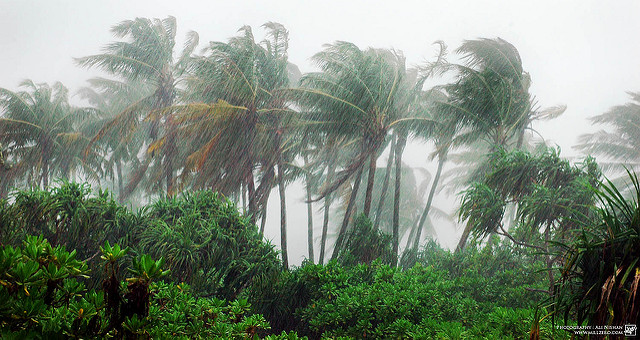Understanding and predicting tropical rain belts

Rainfall in the tropics is critical to many societies and ecosystems. This makes reliable projections of tropical rainfall changes key to climate adaption efforts in a warming world. Global climate models are plagued by persistent biases in the simulation of tropical rainfall and its response to climate change, because their resolution is too coarse to resolve many of the important cloud and precipitation processes. Nevertheless, tropical rainfall is organized in the large-scale structures of the monsoons and the ITCZ whose dynamics are shaped by large-scale energetic and momentum constraints. This suggests that building a coherent understanding of tropical rainfall can benefit from an understanding of these large-scale influences and their coupling with small scale cloud and precipitation processes.
To this end the young investigator group of Dr. Aiko Voigt, in close collaboration with Prof. Michela Biasutti from Columbia University in New York City and Prof. Jacob Scheff from the University of North Carolina Charlotte, is leading the international modeling effort „TRACMIP: Tropical Rain belts with an Annual cycle and a Continent Model Intercomparison Project.“ TRACMIP compares a set of five simulations with 14 state-of-the art global climate models run in idealized aquaplanet and land setups. The simulations explore the dynamics of tropical rainfall, the interactions between the ocean‘s ITCZ and the land monsoons, and the link between processes acting on timescales from hours to decades. The aim is to help articulate the role that large-scale energetic and momentum constraints play in shaping tropical rain fall. The need for a better understanding of these constraints was pointed out in a recent review paper in Nature Geoscience co-authored by Aiko Voigt.
TRACMIP is a freely available set of model simulations with a total size of around 10 TB. Over the last months, Dr. Aiko Voigt has collaborated with the German Climate Computing Centre in Hamburg to homogenize the TRACMIP simulations and to published them on the data portal of the Earth System Grid Federation. As a result TRACMIP is now available in the same way as the widely used datasets from the model intercomparison projects CMIP5 and CMIP6.
At IMK-TRO, TRACMIP is analyzed by Dr. Aiko Voigt together with doctoral student Elzina Bala, who is supported by a DAAD fellowship, and Msc student Freia Then. TRACMIP contributes to the WCRP „Grand Challenge on Clouds, Circulation and Climate Sensitivity.“ TRACMIP was also presented at the international workshop „Monsoons and Tropical Rain Belts“, which was held at the International Centre for Theoretical Physics in Trieste in July 2018 and was co-organized by Aiko Voigt.
Contact person:
Dr. Aiko Voigt, Young Investigator Group „Clouds and Storm Tracks“, IMK-TRO, KIT
References:
TRACMIP Introduction Article: Voigt, A., M. Biasutti et al. (2016), The tropical rain belts with an annual cycle and a continent model intercomparison project: TRACMIP, Journal of Advances in Modeling Earth Systems, 8, 1868–1891, doi:10.1002/2016MS000748.
Nature Geoscience Review Article: Biasutti, M., A. Voigt et al. (2018), Monsoons: global energetics and local physics as drivers of past, present and future monsoons, Nature Geoscience, 11, 392-400, doi:10.1038/s41561-018-0137-1.
ICTP 2018 Workshop on Monsoons: http://indico.ictp.it/event/8457/
Monsoon picture monsoonbild_20190215.jpg: Ali Nishan, https://www.flickr.com/photos/millzero/1892542343; CC BY-NC 2.0 license

